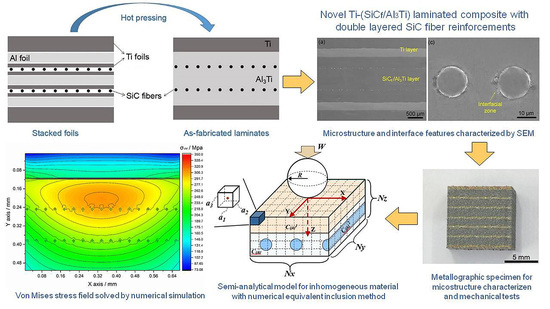Numerical Simulation for Elasto-Plastic Contact of Novel Ti-(SiCf/Al3Ti)-Laminated Composite with Double-Layered SiC Fiber Reinforcements
Abstract
:1. Introduction
2. Fabrication of Ti-(SiCf/Al3Ti)-Laminated Composite with Double-Layered SiC Fiber Reinforcements
3. Numerical Equivalent Inclusion Method
3.1. 3D Semi-Analytical Model Description
3.2. 3D Half-Space Numerical Equivalent Inclusion Method
3.3. Plasticity Consideration
3.4. Numerical Algorithm Implementation Procedure
4. Model Validation
5. Results and Discussion
5.1. Microstructure Observation and Characterization
5.2. Model Validation Results
5.3. Contact Analysis for the Ti-(SiCf/Al3Ti) Composite under Varying Loads
5.4. Parametric Studies
5.4.1. Effect of Size of SiC Fibers
5.4.2. Effect of Position of Hole Defect
5.4.3. Effect of Number of SiC Fiber Rows
6. Conclusions
Author Contributions
Funding
Conflicts of Interest
References
- Harach, D.J.; Vecchio, K.S. Microstructure evolution in metal-intermetallic laminate (MIL) composites synthesized by reactive foil sintering in air. Metall. Mater. Trans. A 2001, 32, 1493–1505. [Google Scholar] [CrossRef]
- Peng, L.M.; Wang, J.H.; Li, H.; Zhao, J.H.; He, L.H. Synthesis and microstructural characterization of Ti–Al3Ti metal–intermetallic laminate (MIL) composites. Scr. Mater. 2005, 52, 243–248. [Google Scholar] [CrossRef]
- Lazurenko, D.V.; Mali, V.I.; Bataev, I.A.; Thoemmes, A.; Bataev, A.A.; Popelukh, A.I.; Anisimov, A.G.; Belousova, N.S. Metal-Intermetallic Laminate Ti-Al3Ti Composites Produced by Spark Plasma Sintering of Titanium and Aluminum Foils Enclosed in Titanium Shells. Metall. Mater. Trans. A Phys. Metall. Mater. Sci. 2015, 46A, 4326–4334. [Google Scholar] [CrossRef]
- Cao, Y.; Zhu, S.F.; Guo, C.H.; Vecchio, K.S.; Jiang, F.C. Numerical Investigation of the Ballistic Performance of Metal-Intermetallic Laminate Composites. Appl. Compos. Mater. 2015, 22, 1–20. [Google Scholar] [CrossRef]
- Peng, H.X.; Fan, Z.C.; Wang, D.Z. In situAl3Ti–Al2O3 intermetallic matrix composite: Synthesis, microstructure, and compressive behavior. J. Mater. Res. 2000, 15, 1943–1949. [Google Scholar] [CrossRef]
- Han, Y.; Jiang, F.; Lin, C.; Yuan, D.; Huang, H.; Wang, E.; Wang, Z.; Guo, C. Microstructure and mechanical properties of continuous ceramic SiC and shape memory alloy NiTi hybrid fibers reinforced Ti-Al metal-intermetallic laminated composite. J. Alloys Compd. 2017, 729, 1145–1155. [Google Scholar] [CrossRef]
- Vecchio, K.S.; Jiang, F.C. Fracture toughness of Ceramic-Fiber-Reinforced Metallic-Intermetallic-Laminate (CFR-MIL) composites. Mater. Des. 2016, 649, 407–416. [Google Scholar] [CrossRef]
- Goetz, R.L.; Kerr, W.R.; Semiatin, S.L. Performance, Modeling of the consolidation of continuous- fiber metal matrix composites via foil-fiber-foil techniques. Metall. Mater. Trans. A 1993, 2, 333–340. [Google Scholar]
- Yu, W.; Zhu, K.; Aman, Y.; Guo, Z.; Xiong, S.J. Bio-inspired design of SiCf-reinforced multi-layered Ti-intermetallic composite. Mater. Des. 2016, 101, 102–108. [Google Scholar] [CrossRef]
- Zhu, K.; Yu, W.; Aman, Y.; Jing, T.J. Synthesis, microstructure and mechanical properties of a bio-inspired Ti-intermetallic multi-layered/SiCf-reinforced Ti-matrix hybrid composite. J. Magnesium Alloys 2016, 51, 8747–8760. [Google Scholar] [CrossRef]
- Li, T.; Grignon, F.; Benson, D.J.; Vecchio, K.S.; Olevsky, E.A.; Jiang, F.; Rohatgi, A.; Schwarz, R.B.; Meyers, M.A. Modeling the elastic properties and damage evolution in Ti–Al3Ti metal–intermetallic laminate (MIL) composites. Mater. Sci. Eng. A 2004, 374, 10–26. [Google Scholar] [CrossRef]
- Li, T.; Jiang, F.; Olevsky, E.A.; Vecchio, K.S.; Meyers, M.A. Damage evolution in Ti6Al4V–Al3Ti metal-intermetallic laminate composites. Mater. Sci. Eng. A 2007, 443, 1–15. [Google Scholar] [CrossRef]
- Li, T.; Olevsky, E.A.; Meyers, M.A. The development of residual stresses in Ti6Al4V-Al3Ti metal-intermetallic laminate (MIL) composites. Mater. Sci. Eng. A 2008, 473, 49–57. [Google Scholar] [CrossRef]
- Adharapurapu, R.R.; Vecchio, K.S.; Jiang, F.; Metallurgical, A.R. Fracture of Ti-Al3Ti metal-intermetallic laminate composites: Effects of lamination on resistance-curve behavior. Metall. Mater. Trans. A 2005, 36, 3217–3236. [Google Scholar] [CrossRef]
- Adharapurapu, R.R.; Vecchio, K.S.; Jiang, F.; Rohatgi, A.J. Effects of ductile laminate thickness, volume fraction, and orientation on fatigue-crack propagation in Ti-Al3Ti metal-intermetallic laminate composites. Metall. Mater. Trans. A 2005, 36, 1595–1608. [Google Scholar] [CrossRef]
- Vecchio, K.S. Synthetic multifunctional metallic-intermetallic laminate composites. JOM 2005, 57, 25–31. [Google Scholar] [CrossRef]
- Cao, Y.; Guo, C.; Zhu, S.; Wei, N.; Javed, R.A.; Jiang, F.J. Fracture behavior of Ti/Al3Ti metal-intermetallic laminate (MIL) composite under dynamic loading. Mater. Sci. Eng. A 2015, 637, 235–242. [Google Scholar] [CrossRef]
- Tsartsaris, N.; Meo, M.; Dolce, F.; Polimeno, U.; Guida, M.; Marulo, F.J. Low-velocity impact behavior of fiber metal laminates. J. Compos. Mater. 2011, 45, 803–814. [Google Scholar] [CrossRef]
- Zhou, Q.; Jin, X.; Wang, Z.; Wang, J.; Keer, L.M.; Wang, Q. Numerical Implementation of the Equivalent Inclusion Method for 2D Arbitrarily Shaped Inhomogeneities. J. Elast. 2015, 118, 39–61. [Google Scholar] [CrossRef]
- Liu, S.; Jin, X.; Wang, Z.; Keer, L.M.; Wang, Q. Analytical solution for elastic fields caused by eigenstrains in a half-space and numerical implementation based on FFT. Int. J. Plast. 2012, 35, 135–154. [Google Scholar] [CrossRef]
- Eshelby, J.D. The Determination of the Elastic Field of an Ellipsoidal Inclusion, and Related Problems. Proc. R. Soc. London 1957, 241, 376–396. [Google Scholar]
- Zhou, Q.; Jin, X.; Wang, Z.; Wang, J.; Keer, L.M.; Wang, Q. An efficient approximate numerical method for modeling contact of materials with distributed inhomogeneities. Int. J. Solids Struct. 2014, 51, 3410–3421. [Google Scholar] [CrossRef]
- Chiu, Y.P. On the Stress Field Due to Initial Strains in a Cuboid Surrounded by an Infinite Elastic Space. J. Appl. Mech. 1977, 44, 587–590. [Google Scholar] [CrossRef]
- Chiu, Y.P. On the Stress Field and Surface Deformation in a Half Space with a Cuboidal Zone in Which Initial Strains are Uniform. J. Appl. Mech. 1978, 45, 302–306. [Google Scholar] [CrossRef]
- Lin, C.; Jiang, F.; Han, Y.; Wang, E.; Yuan, D.; Guo, C. Microstructure evolution and fracture behavior of innovative Ti-(SiCf/Al3Ti) laminated composites. J. Alloys Compd. 2018, 743, 52–62. [Google Scholar] [CrossRef]
- Han, Y.; Lin, C.; Han, X.; Chang, Y.; Guo, C.; Jiang, F. Fabrication, interfacial characterization and mechanical properties of continuous Al2O3 ceramic fiber reinforced Ti/Al3Ti metal-intermetallic laminated (CCFR-MIL) composite. Mater. Sci. Eng. A 2017, 688, 338–345. [Google Scholar] [CrossRef]
- Zhou, Q.; Jin, X.; Wang, Z.; Wang, J.; Keer, L.M.; Wang, Q. Numerical EIM with 3D FFT for the contact with a smooth or rough surface involving complicated and distributed inhomogeneities. Tribol. Int. 2016, 93, 91–103. [Google Scholar] [CrossRef]
- Zhang, M.; Zhao, N.; Glaws, P.; Hegedus, P.; Zhou, Q.; Wang, Z.; Jin, X.; Keer, L.M.; Wang, Q. Elasto-plastic contact of materials containing double-layered inhomogeneities. Int. J. Solids Struct. 2017, 126–127, 208–224. [Google Scholar] [CrossRef]
- Liu, J.C.; Zhang, L.; Jiang, F.C.; Zhang, M.Q.; Wang, L.Q.; Yun, F.H. Elasto-Plastic Mechanical Properties and Failure Mechanism of Innovative Ti-(SiCf/Al3Ti) Laminated Composites for Sphere-Plane Contact at the Early Stage of Penetration Process. Materials 2018, 11, 33. [Google Scholar] [CrossRef]
- Lin, C.; Han, Y.; Guo, C.; Chang, Y.; Han, X.; Lan, L.; Jiang, F. Synthesis and mechanical properties of novel Ti-(SiCf/Al3Ti) ceramic-fiber-reinforced metal-intermetallic-laminated (CFR-MIL) composites. J. Alloys Compd. 2017, 722, 427–437. [Google Scholar] [CrossRef]
- Mura, T. Micromechanics of Defects in Solids; Springer Nature: Basingstoke, UK, 2013; pp. 316–319. [Google Scholar]
- Mura, T. Mechanics of Elastic and Inelastic Solids; Springer Nature: Basingstoke, UK, 1987. [Google Scholar]
- Polonsky, I.A.; Keer, L.M. A numerical method for solving rough contact problems based on the multi-level multi-summation and conjugate gradient techniques. Wear 1999, 231, 206–219. [Google Scholar] [CrossRef]
- Liu, S.; Wang, Q. Elastic Fields due to Eigenstrains in a Half-Space. J. Appl. Mech. 2005, 72, 871–878. [Google Scholar] [CrossRef]
- Liu, S.; Hua, D.; Chen, W.W.; Wang, Q.J. Tribological modeling: Application of fast Fourier transform. Tribol. Int. 2007, 40, 1284–1293. [Google Scholar] [CrossRef]
- Chen, W.W.; Liu, S.; Wang, Q.J. Fast Fourier Transform Based Numerical Methods for Elasto-Plastic Contacts of Nominally Flat Surfaces. J. Appl. Mech. 2008, 75, 011022. [Google Scholar] [CrossRef]
- Chen, W.W.; Wang, Q.J.; Wang, F.; Keer, L.M.; Cao, J. Three-Dimensional Repeated Elasto-Plastic Point Contacts, Rolling, and Sliding. J. Appl. Mech. 2008, 75, 340–345. [Google Scholar] [CrossRef]
- Fotiu, P.A.; Nemat-Nasser, S. A universal integration algorithm for rate-dependent elastoplasticity. Comput. Struct. 1996, 59, 1173–1184. [Google Scholar] [CrossRef]
- Nelias, D.; Boucly, V.; Brunet, M. Elastic-Plastic Contact Between Rough Surfaces: Proposal for a Wear or Running-in Model. J. Tribol. 2006, 128, 236–244. [Google Scholar] [CrossRef]
- Jacq, C.; Nelias, D.; Lormand, G.; Girodin, D. Development of a Three-Dimensional Semi-Analytical Elastic-Plastic Contact Code. J. Tribol. 2002, 124, 653–667. [Google Scholar] [CrossRef]
- Zhang, M.; Zhao, N.; Wang, Z.; Wang, Q. Efficient numerical method with a dual-grid scheme for contact of inhomogeneous materials and its applications. Comput. Mech. 2018, 62, 991–1007. [Google Scholar] [CrossRef]
- Maniscalco, N.I. Design and fabrication of electro-thermal microcantilevers for ultrafast molecular sorting and delivery. Master’s Thesis, University of Illinois at Urbana-Champaign, Champaign, IL, USA, 6 January 2010. [Google Scholar]
- Chai, G.B.; Manikandan, P. Low velocity impact response of fiber-metal laminates—A review. Compos. Struct. 2014, 107, 363–381. [Google Scholar] [CrossRef]
- Becher, P.F. Microstructural Design of Toughened Ceramics. J. Am. Ceram. Soc. 2010, 74, 255–269. [Google Scholar] [CrossRef]
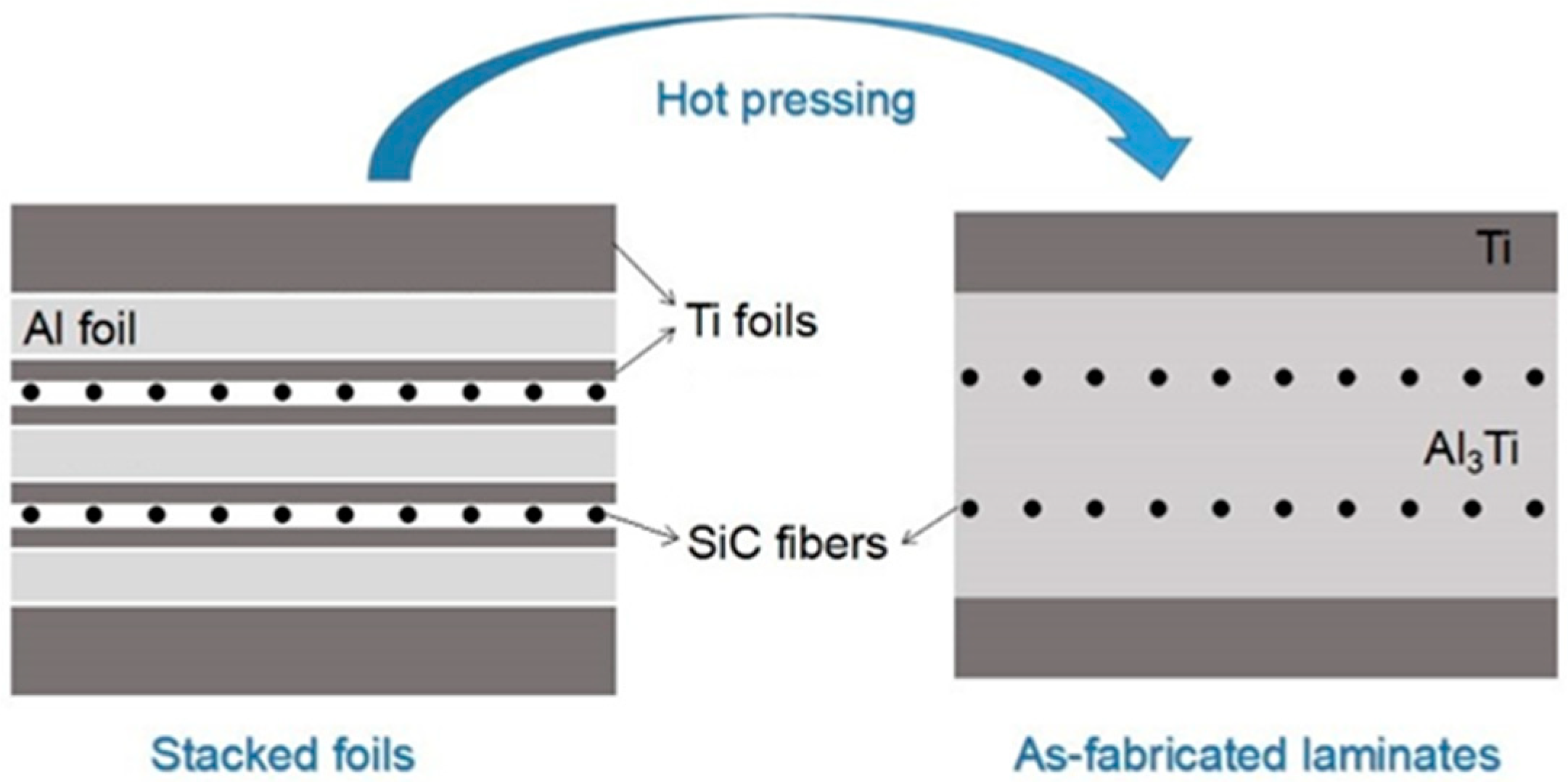
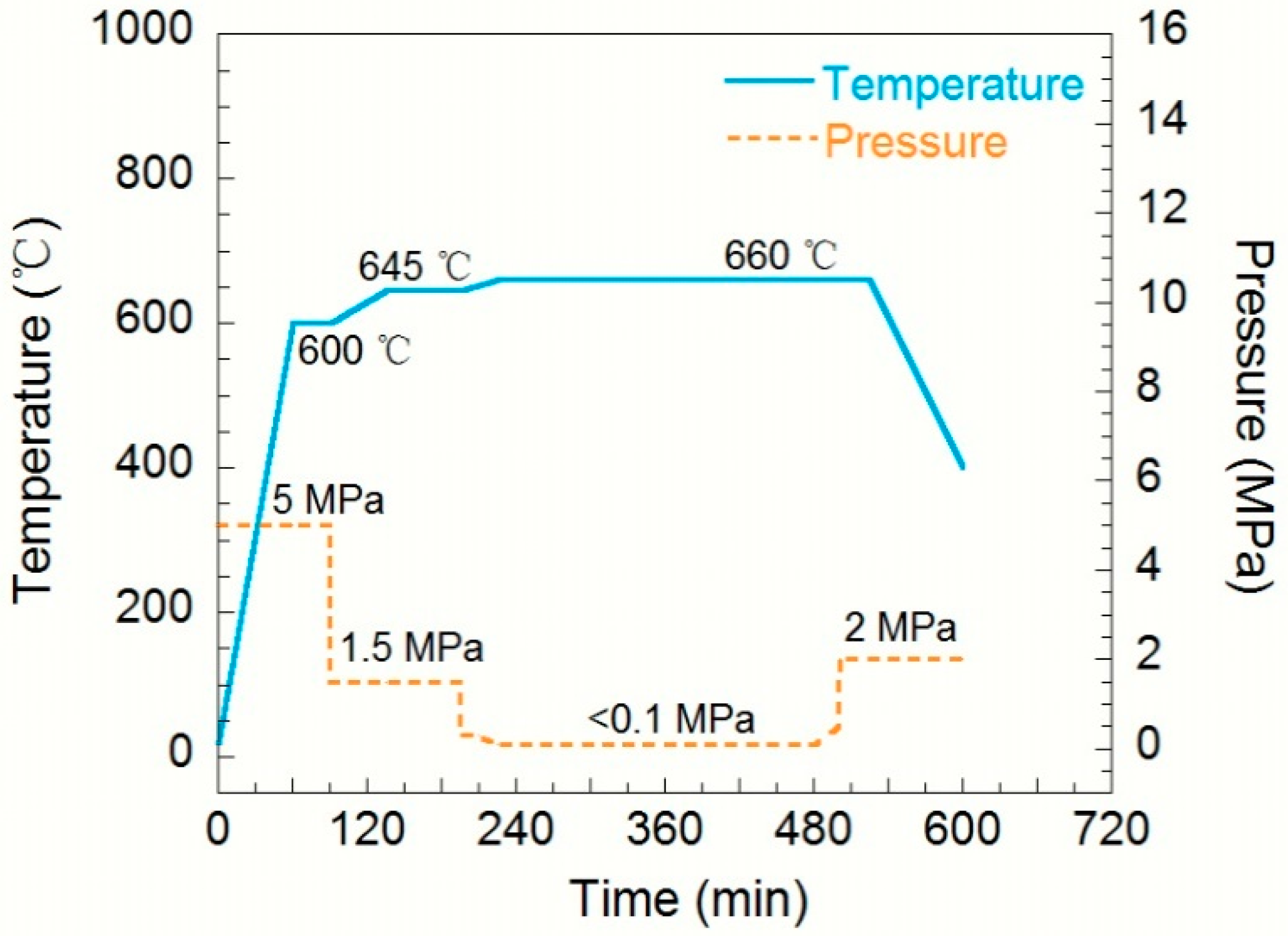
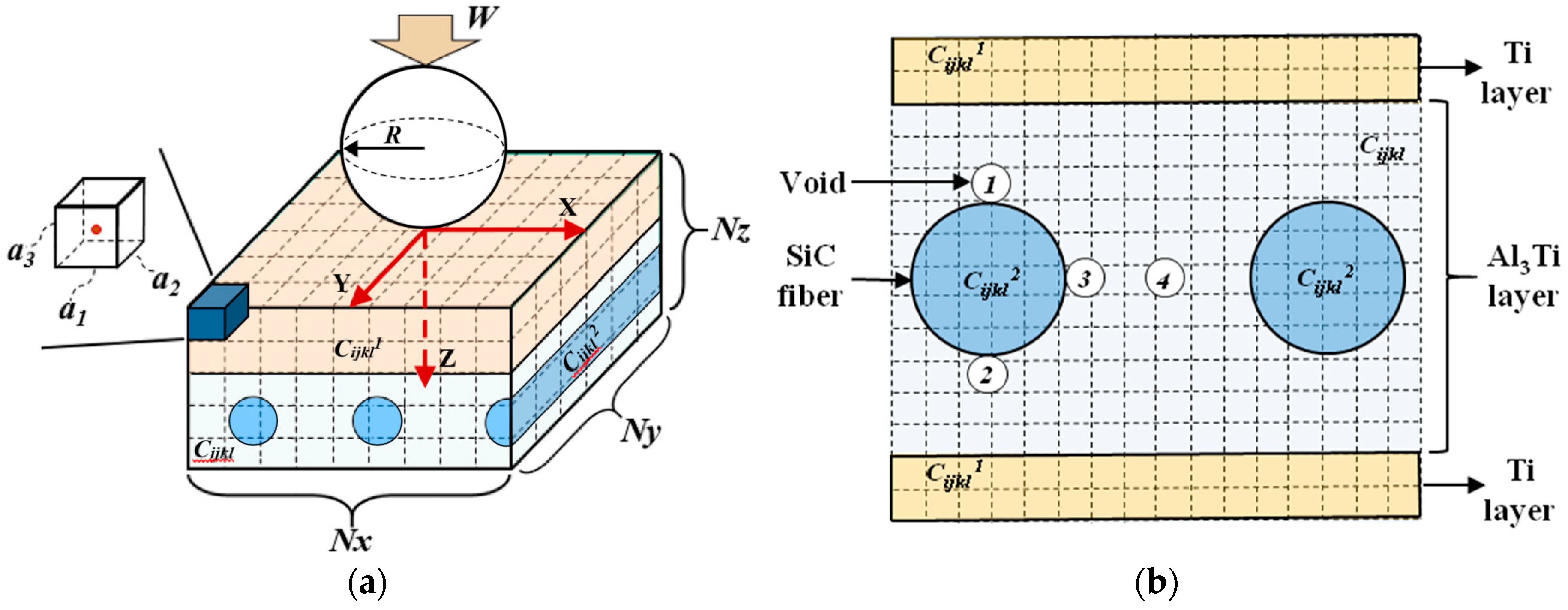
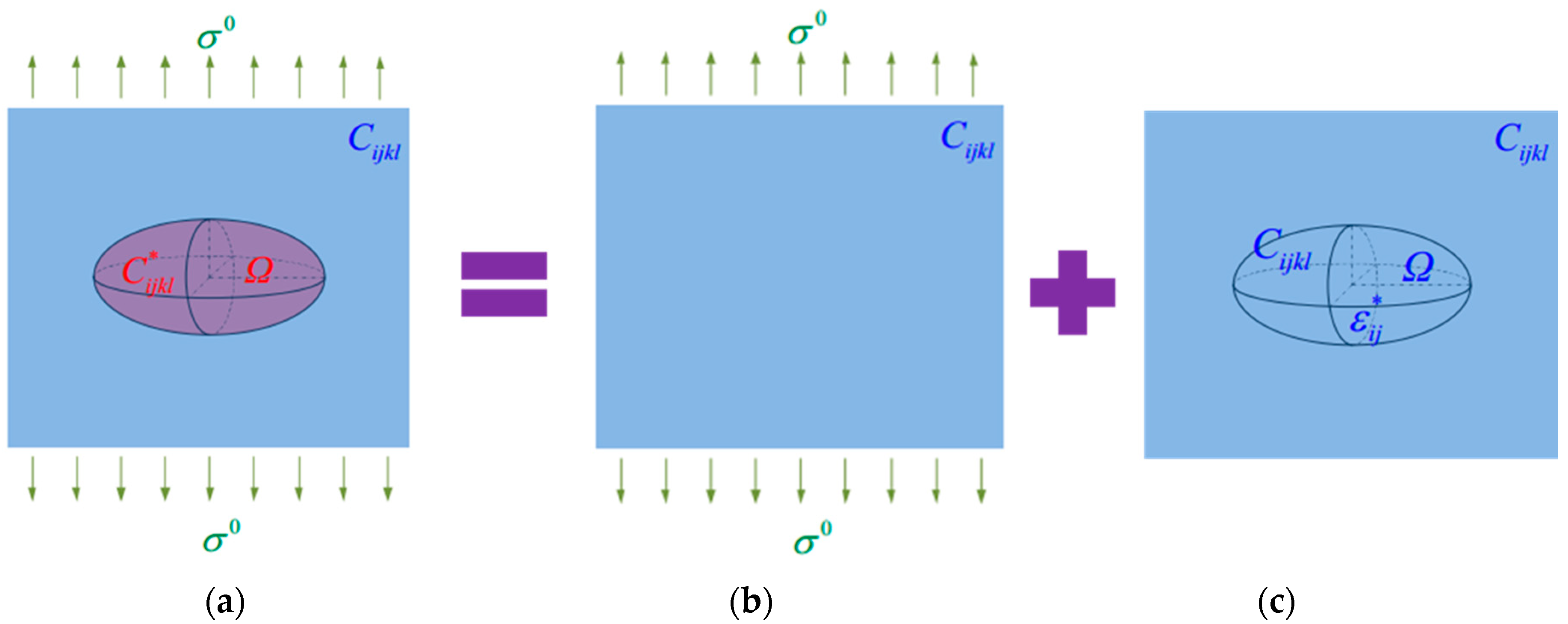
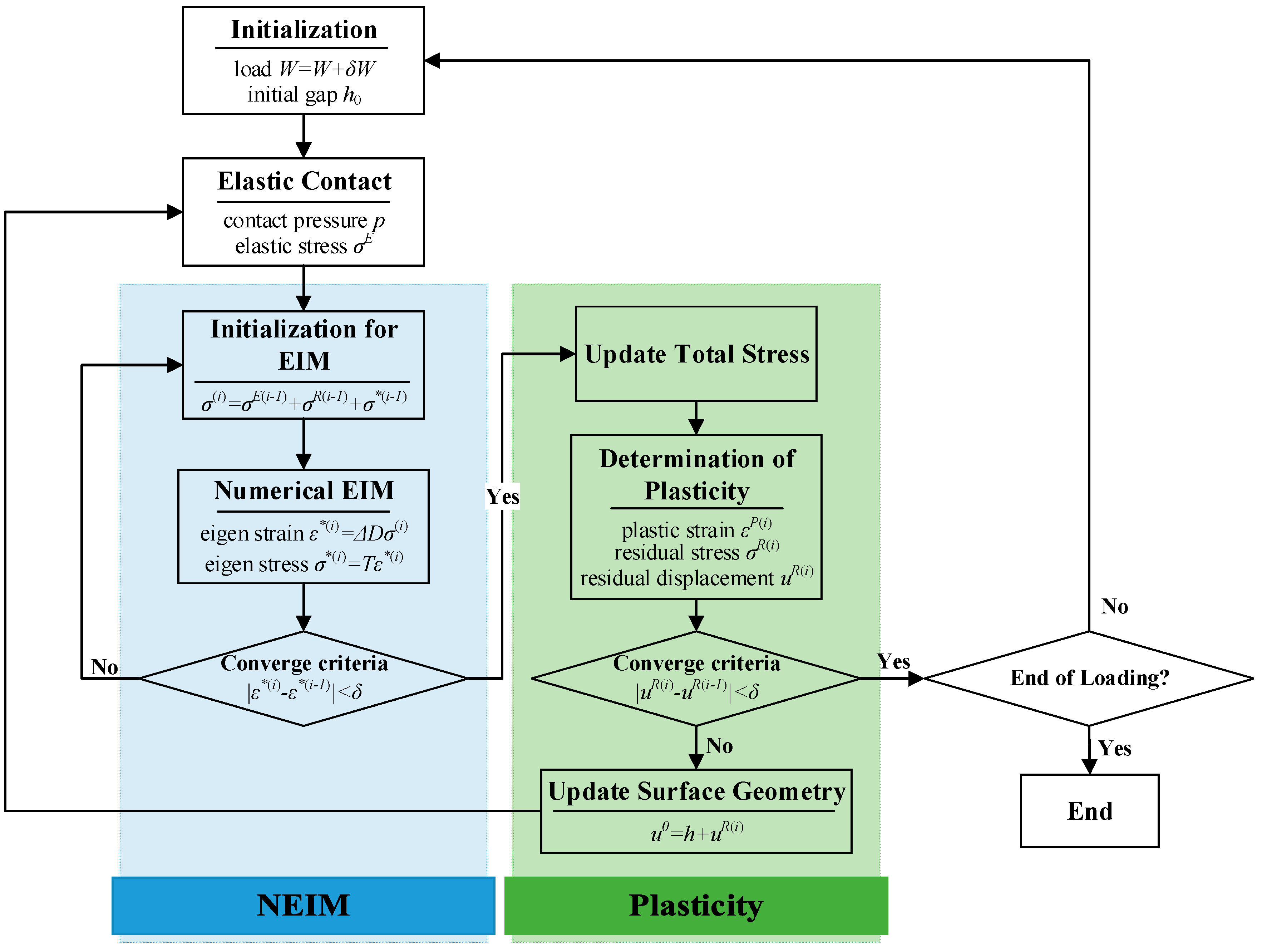
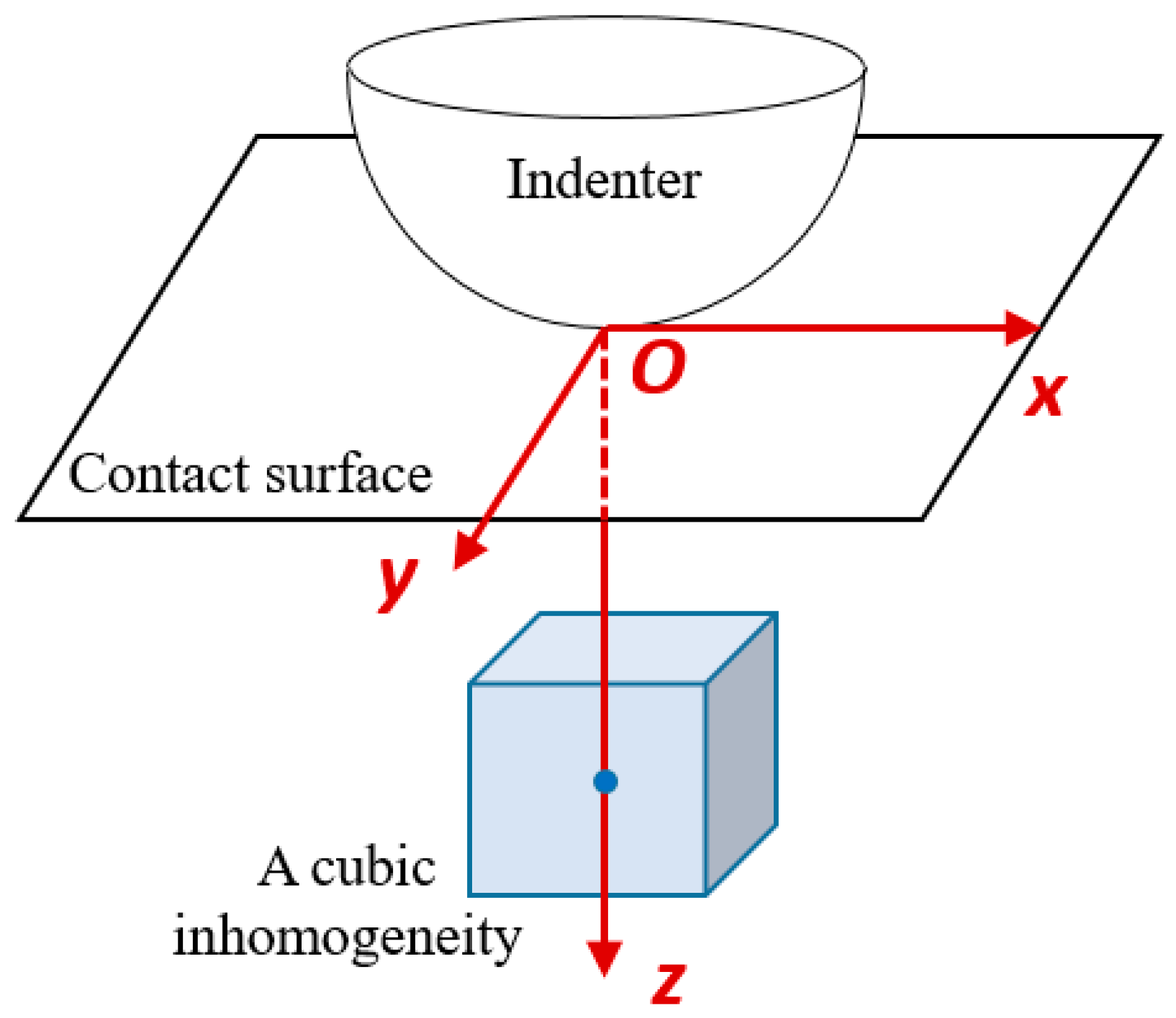
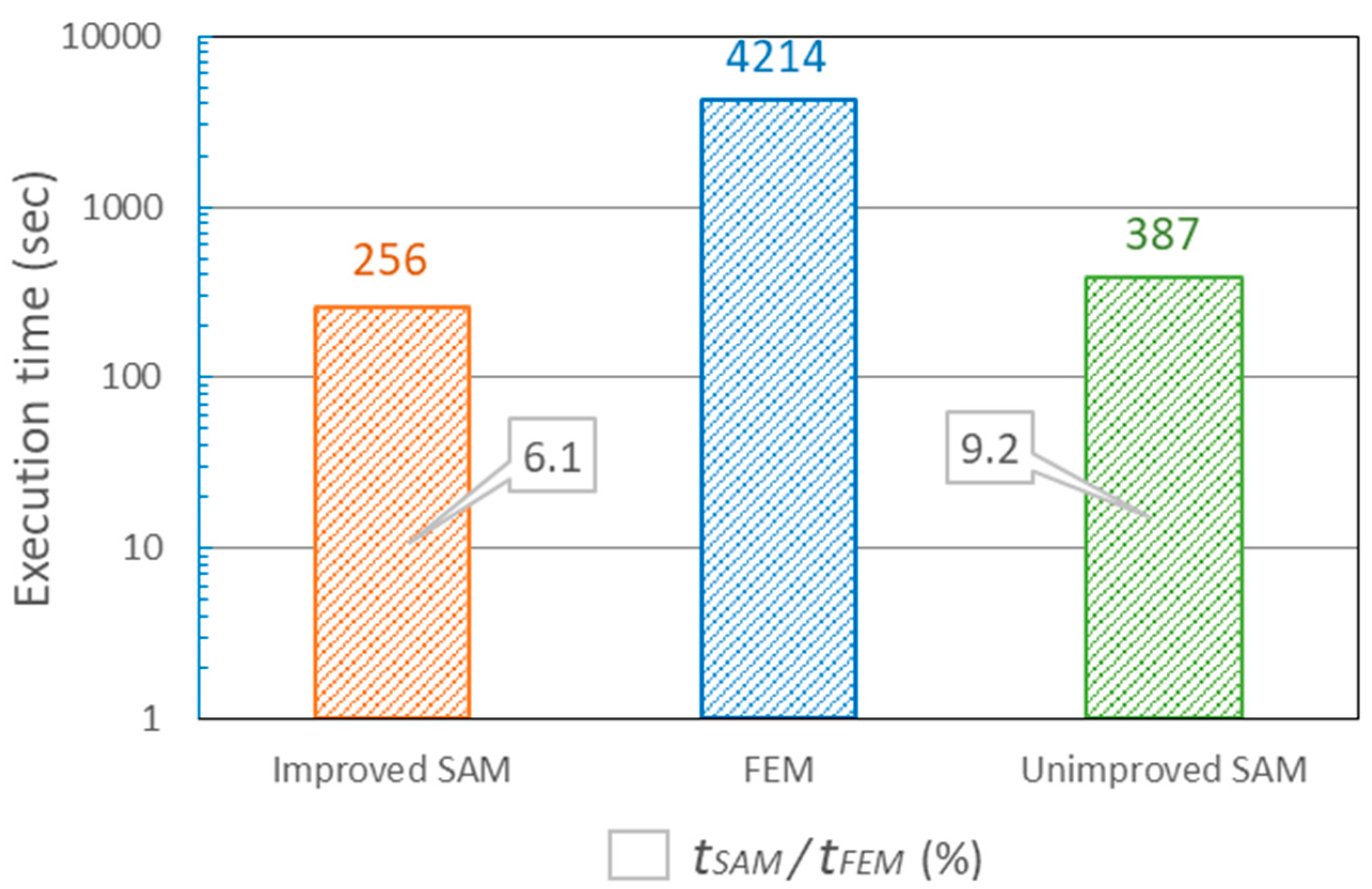

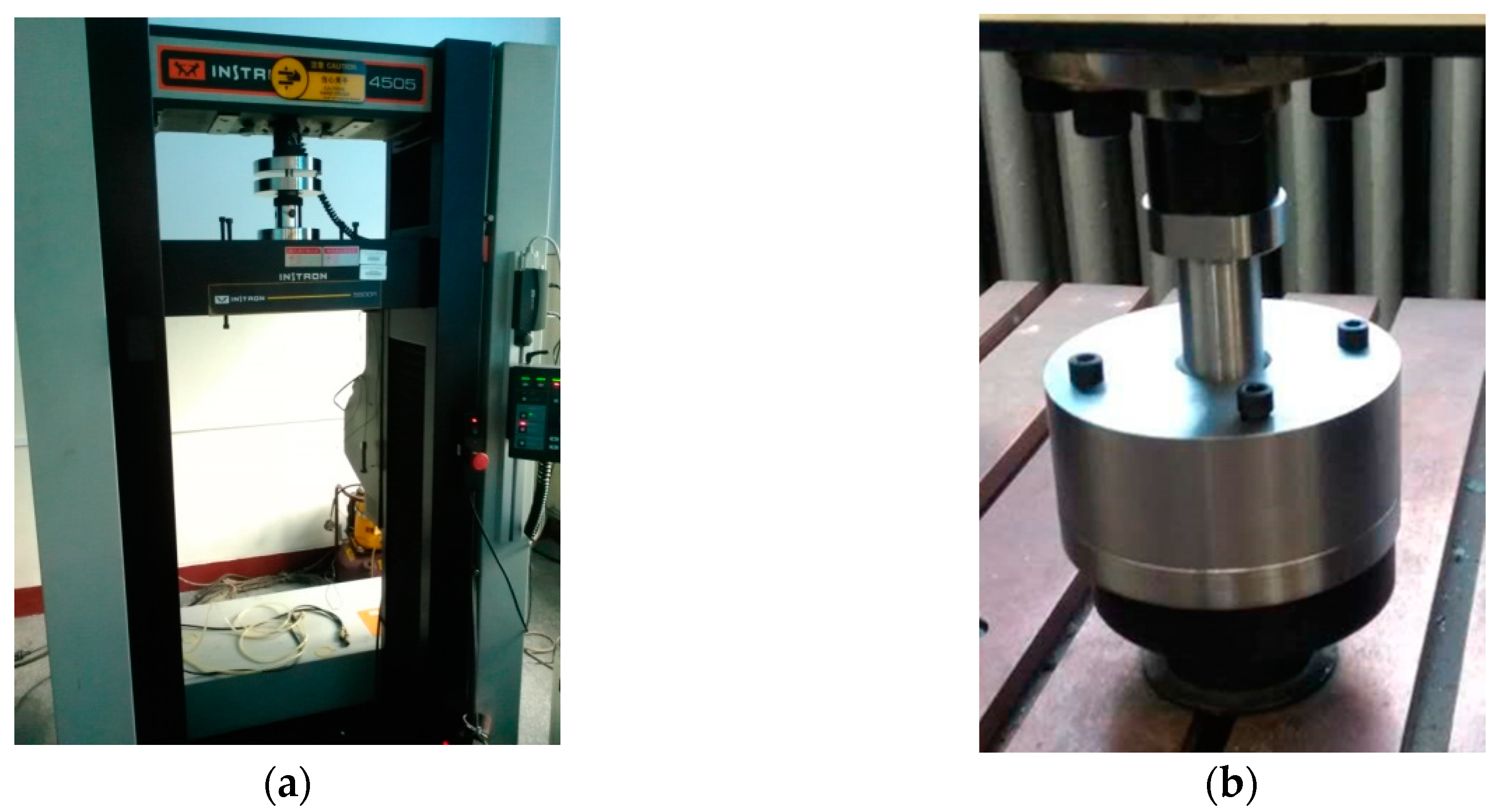
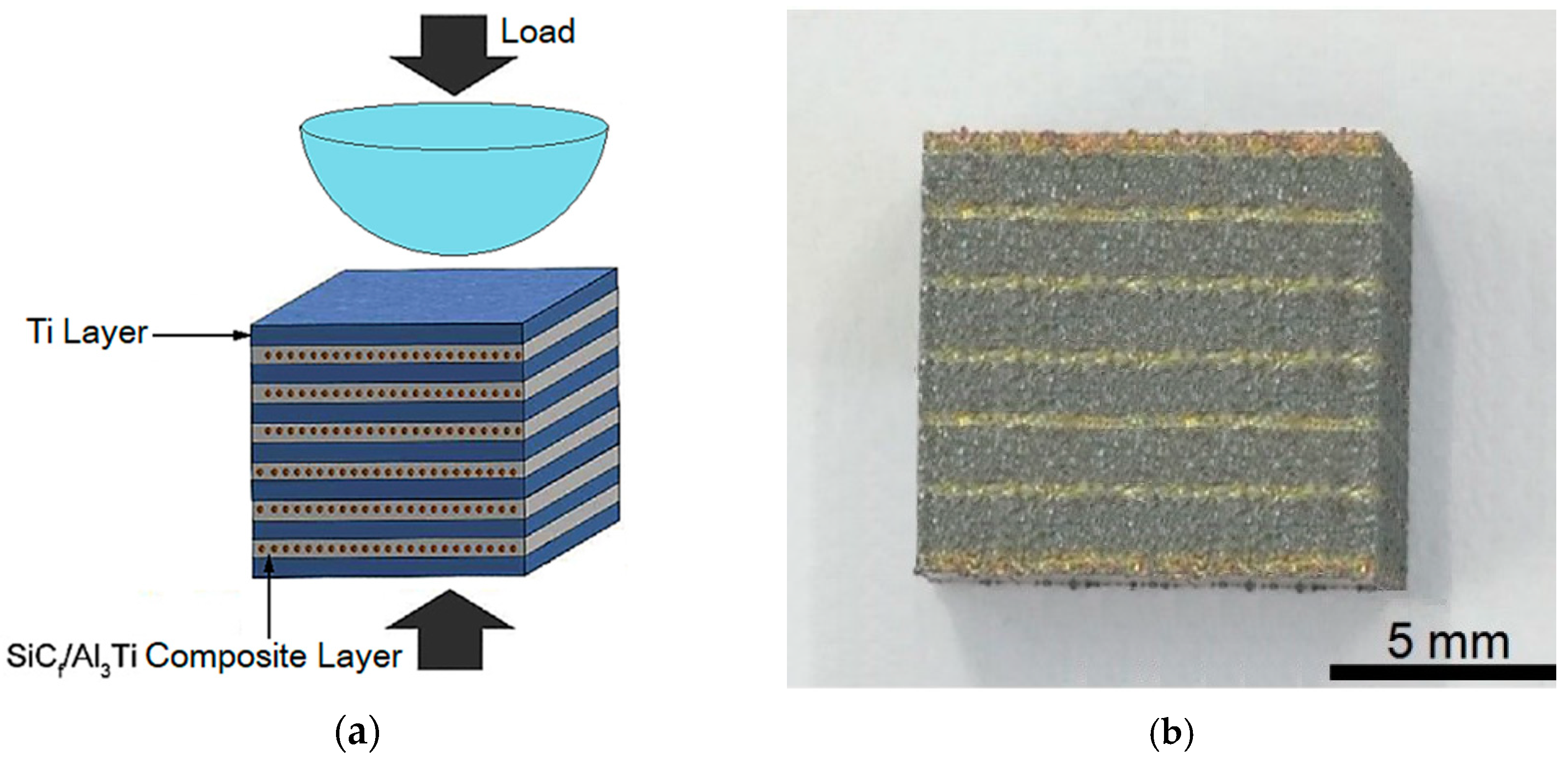

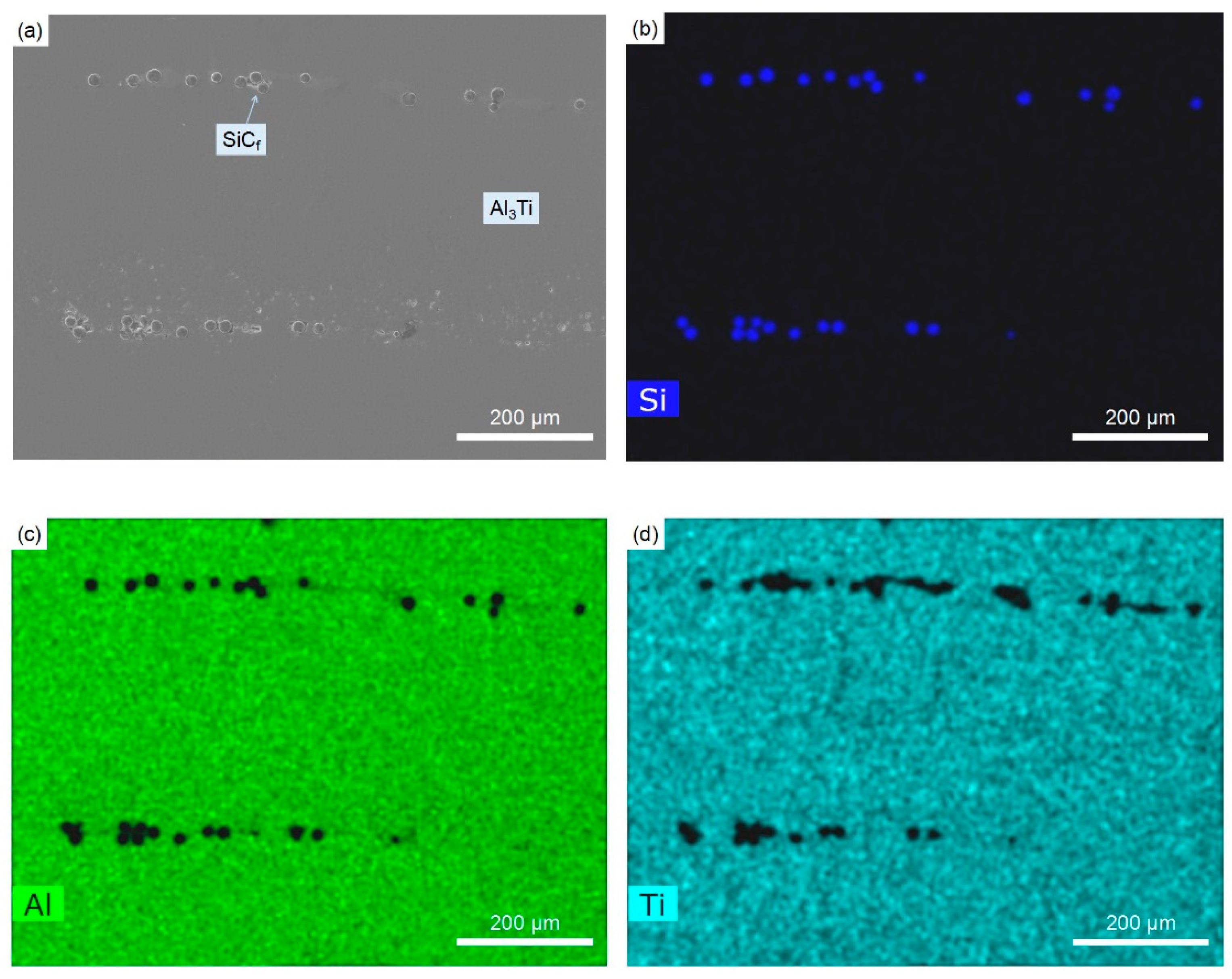
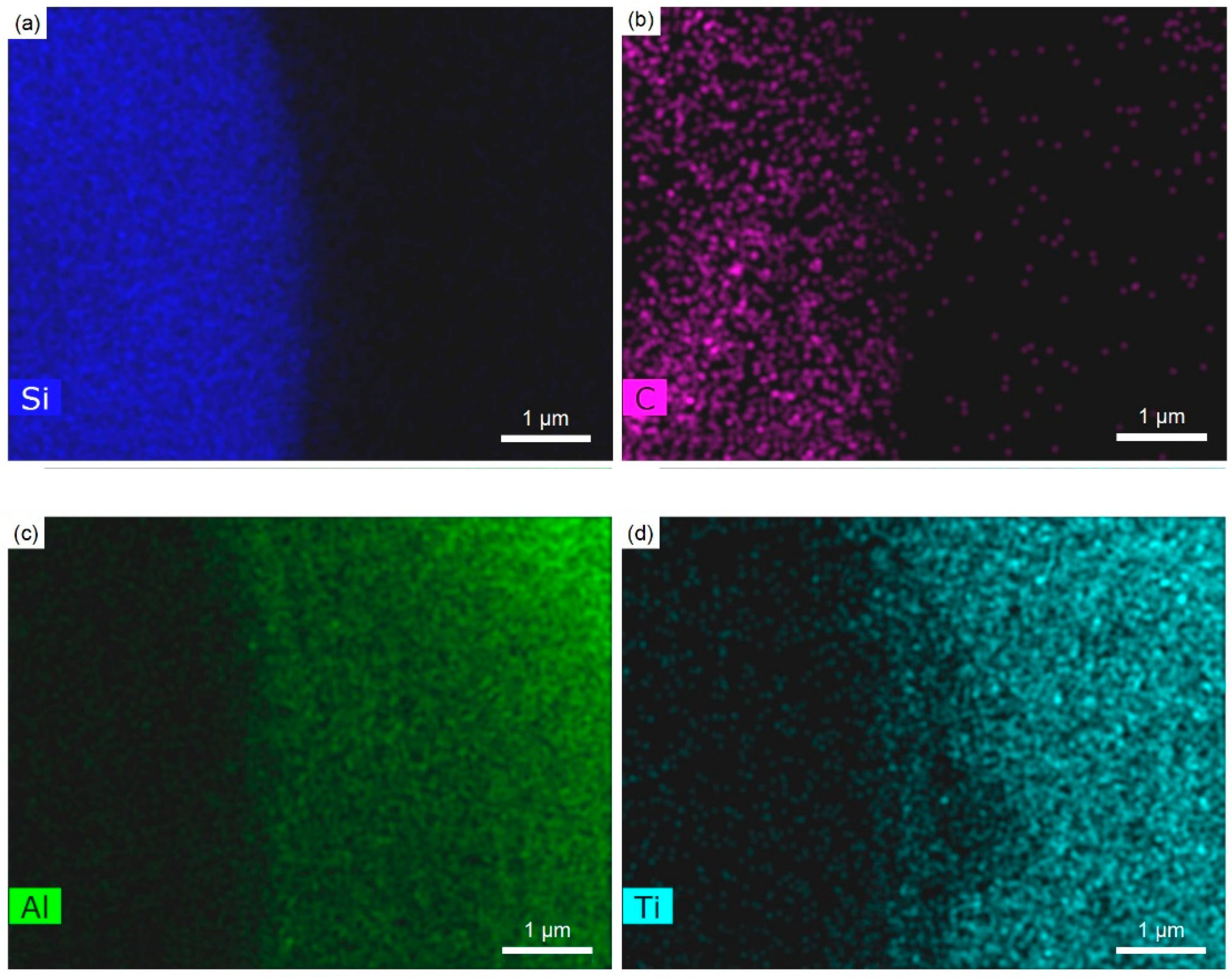

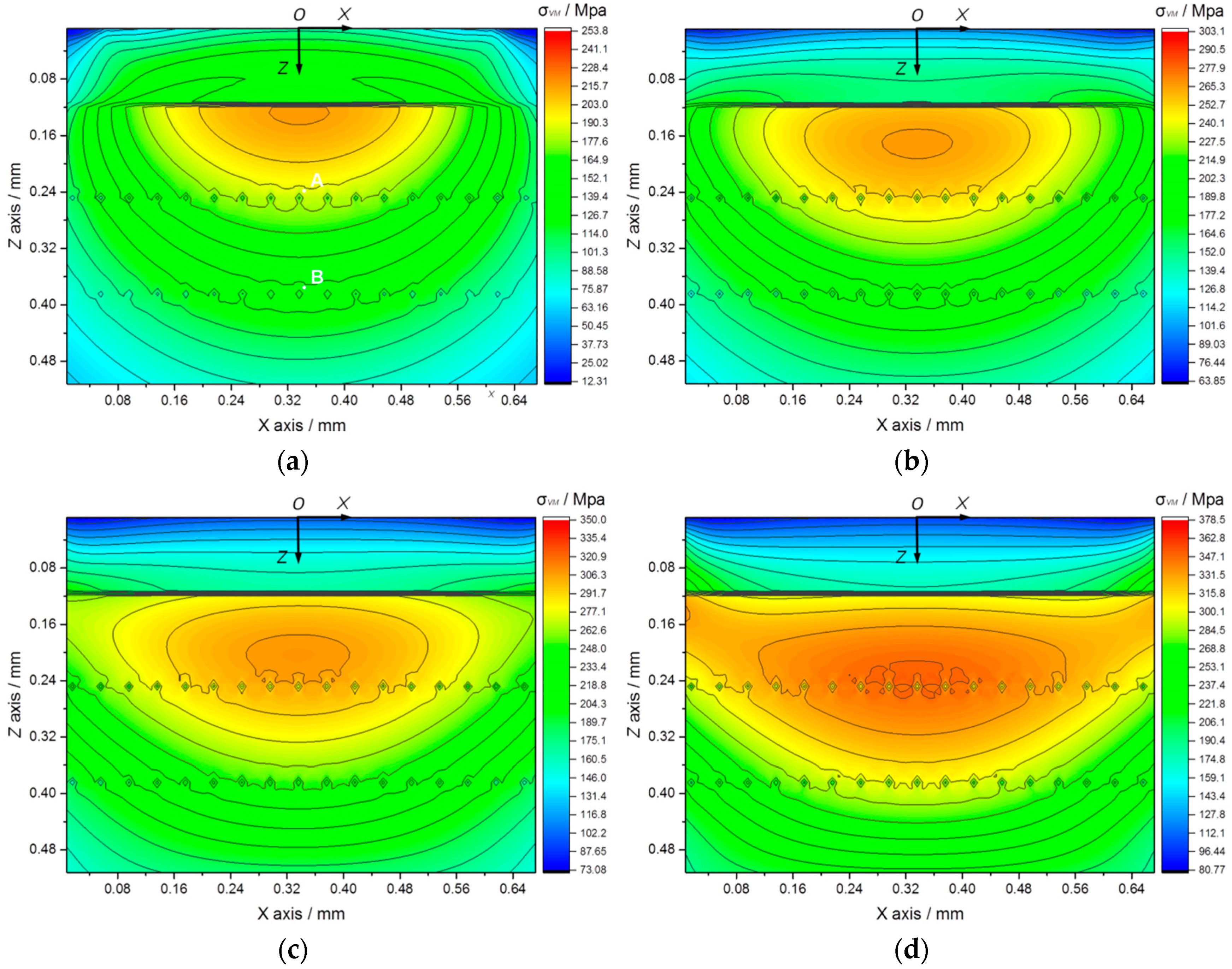
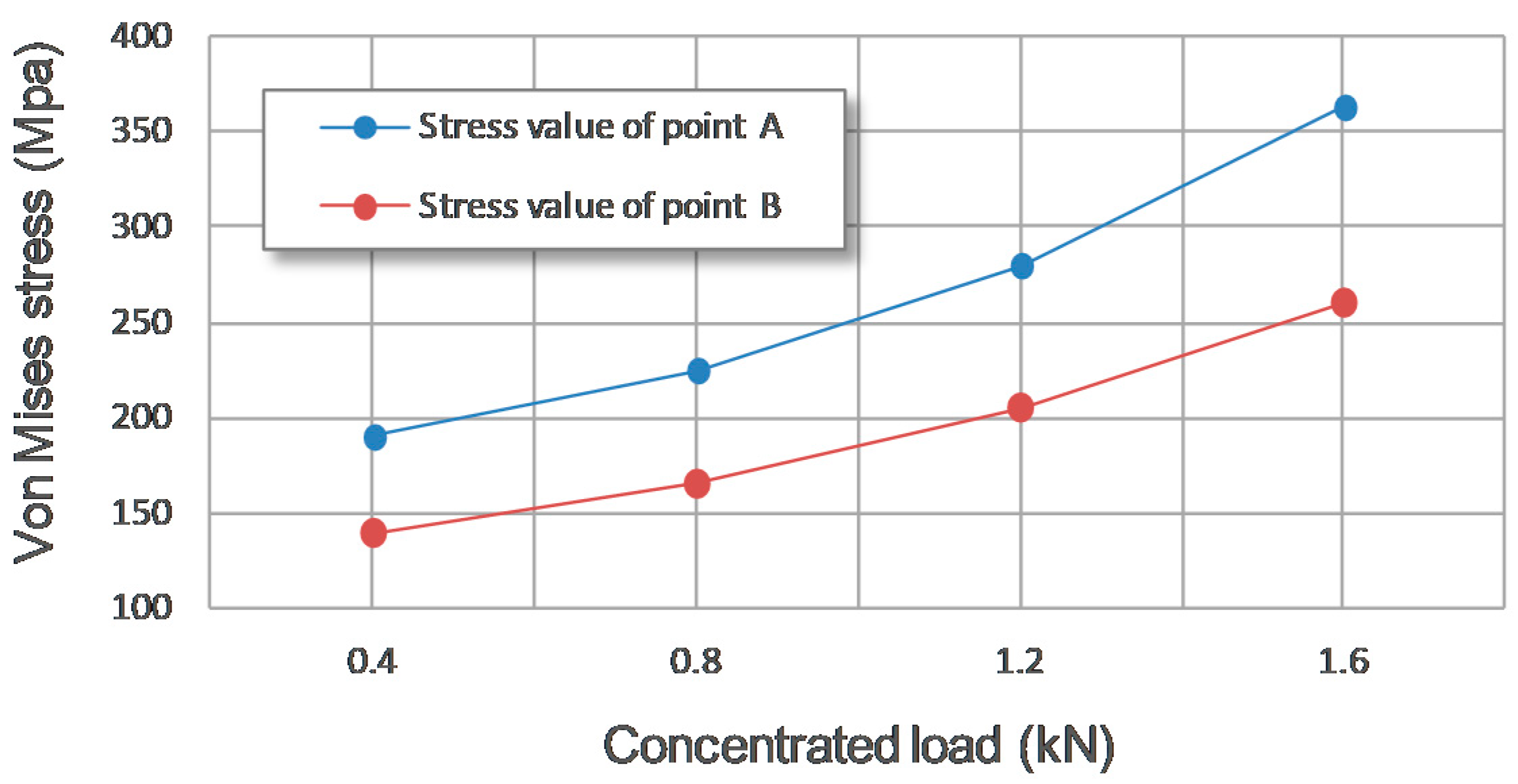
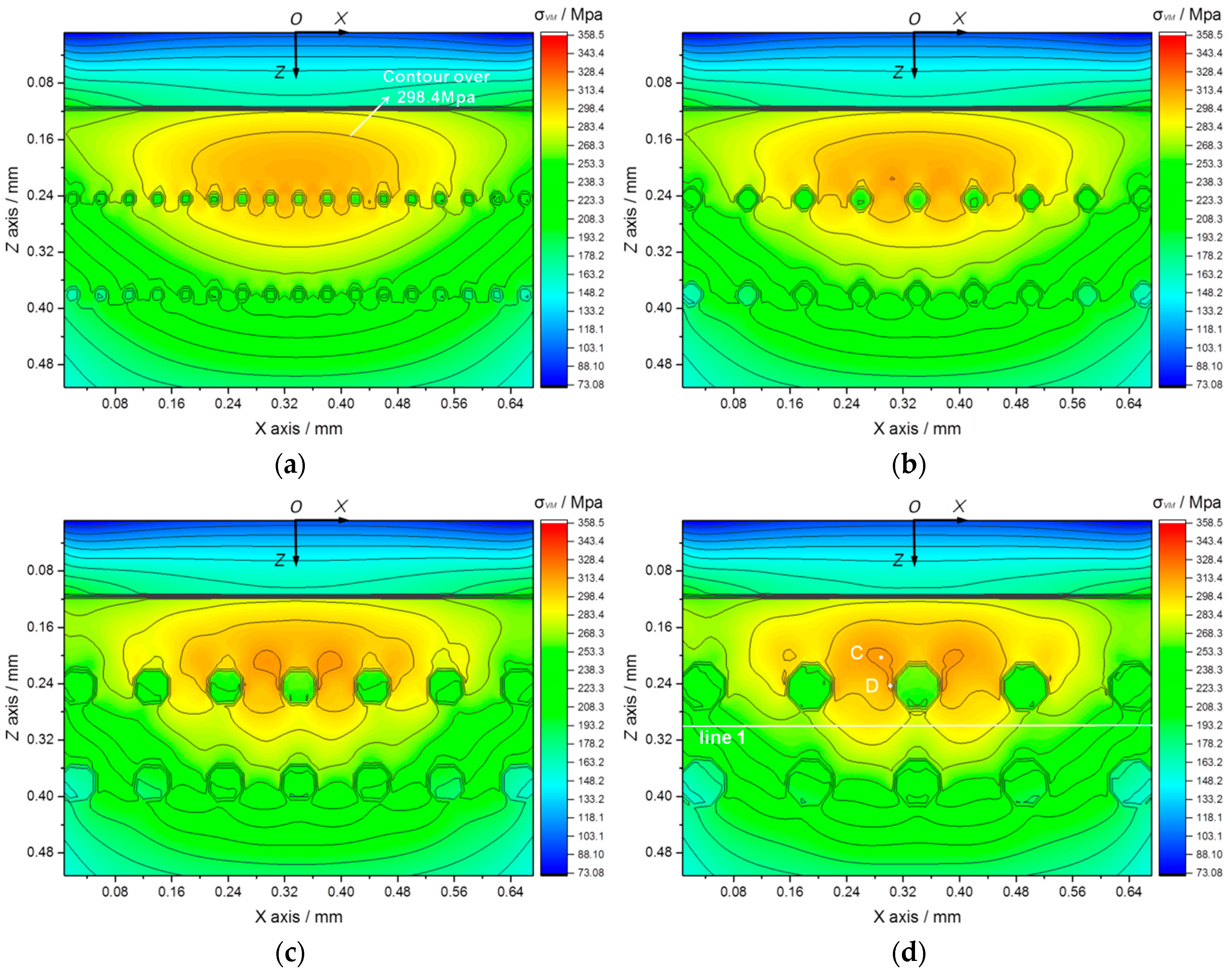
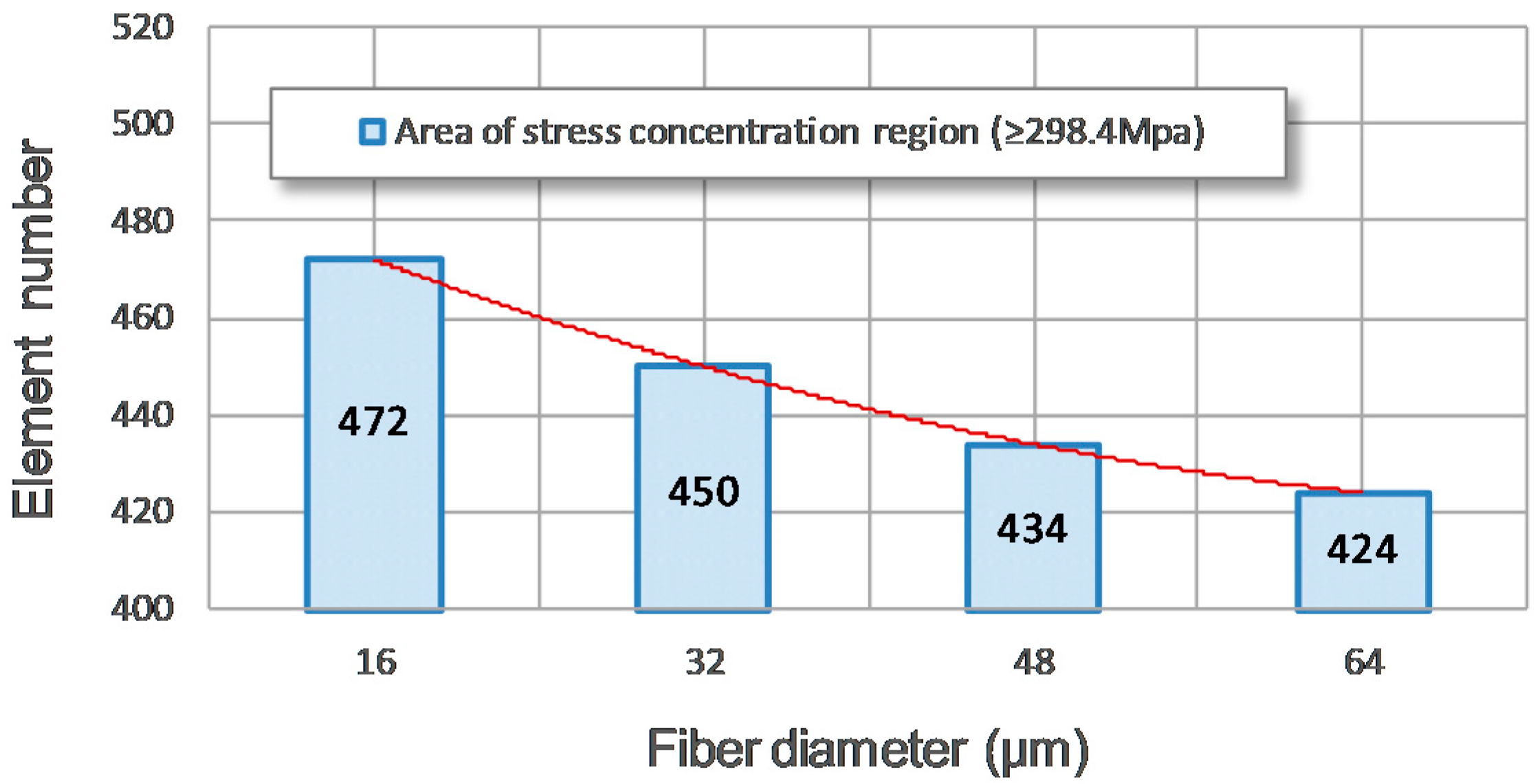
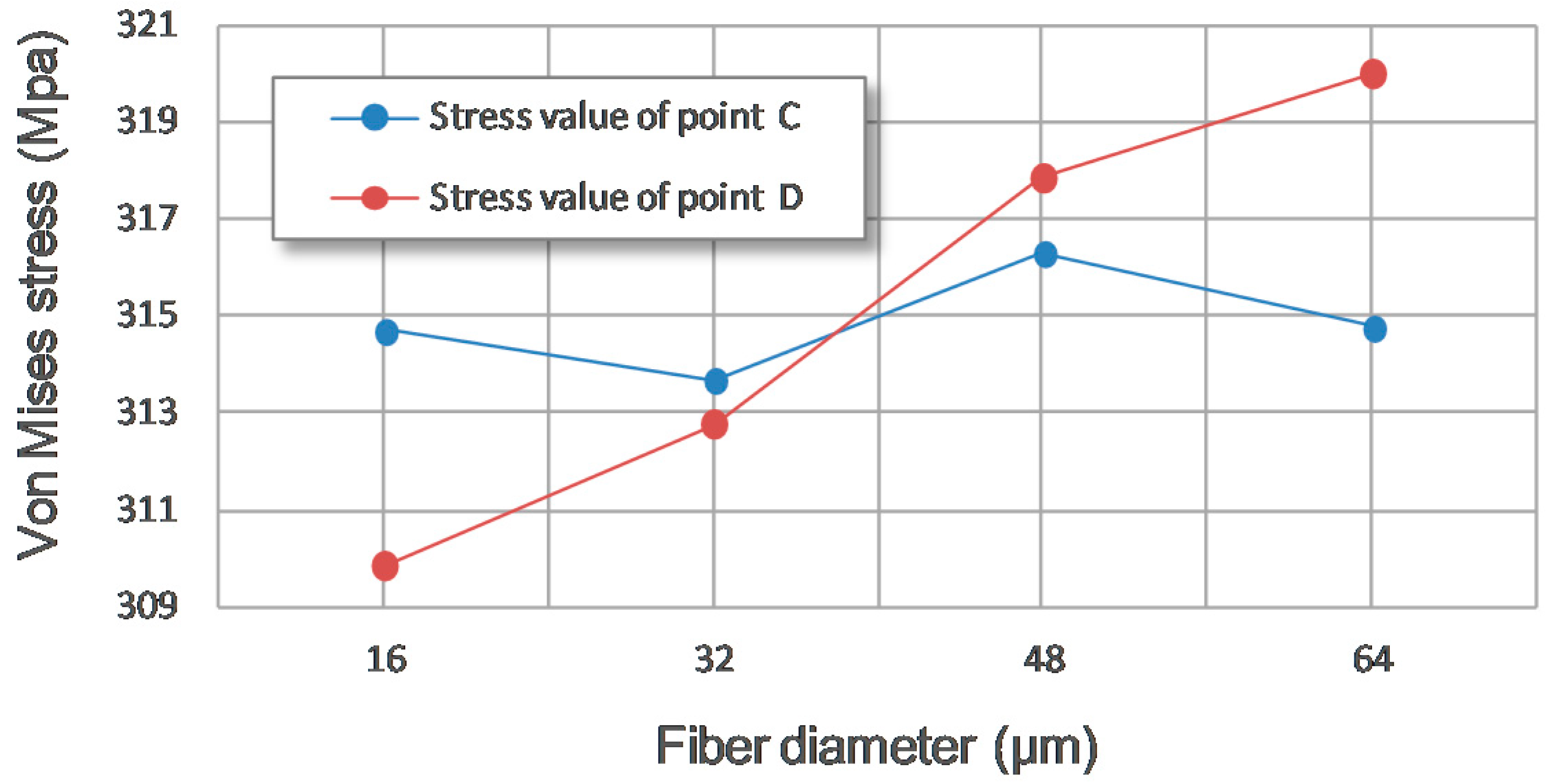
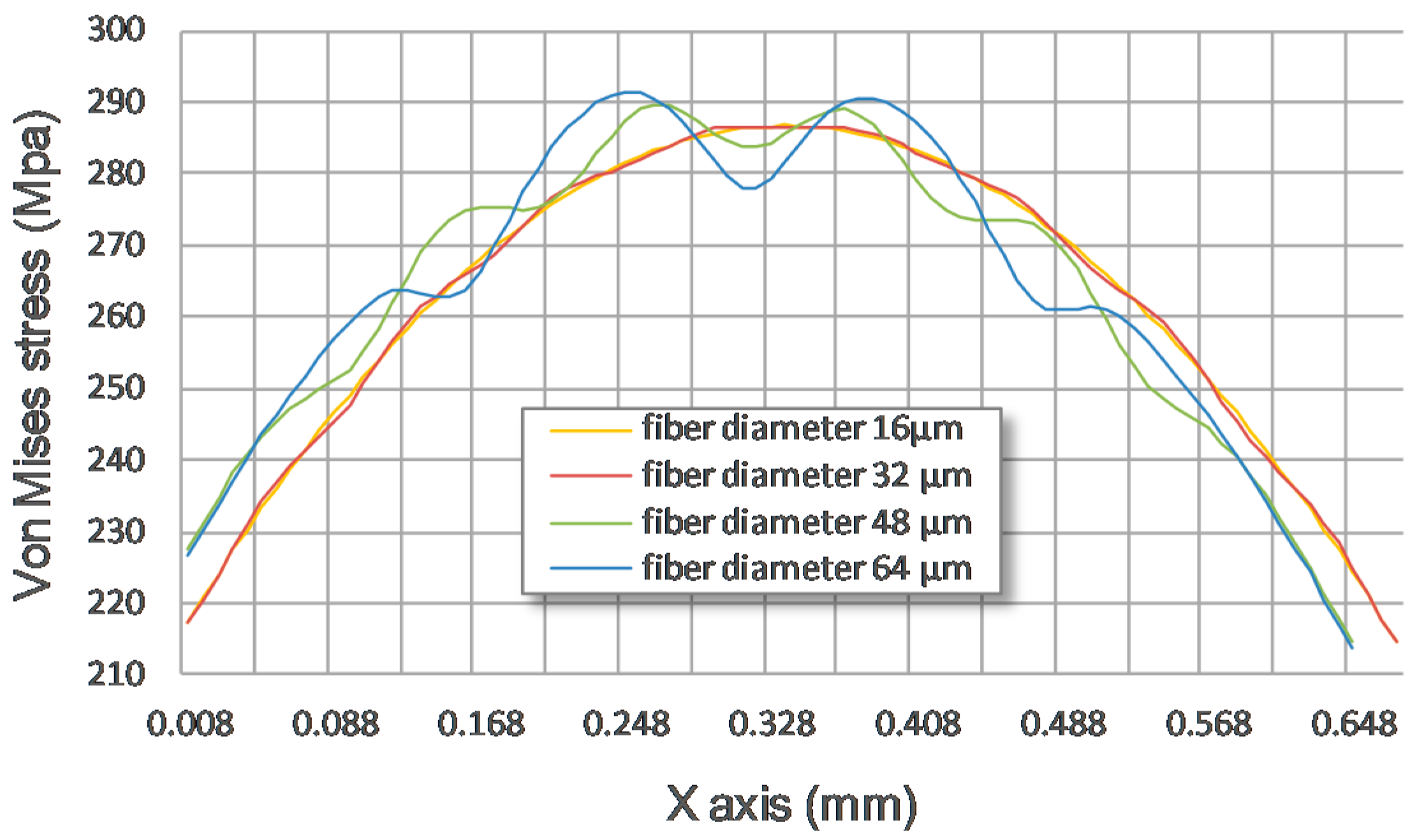
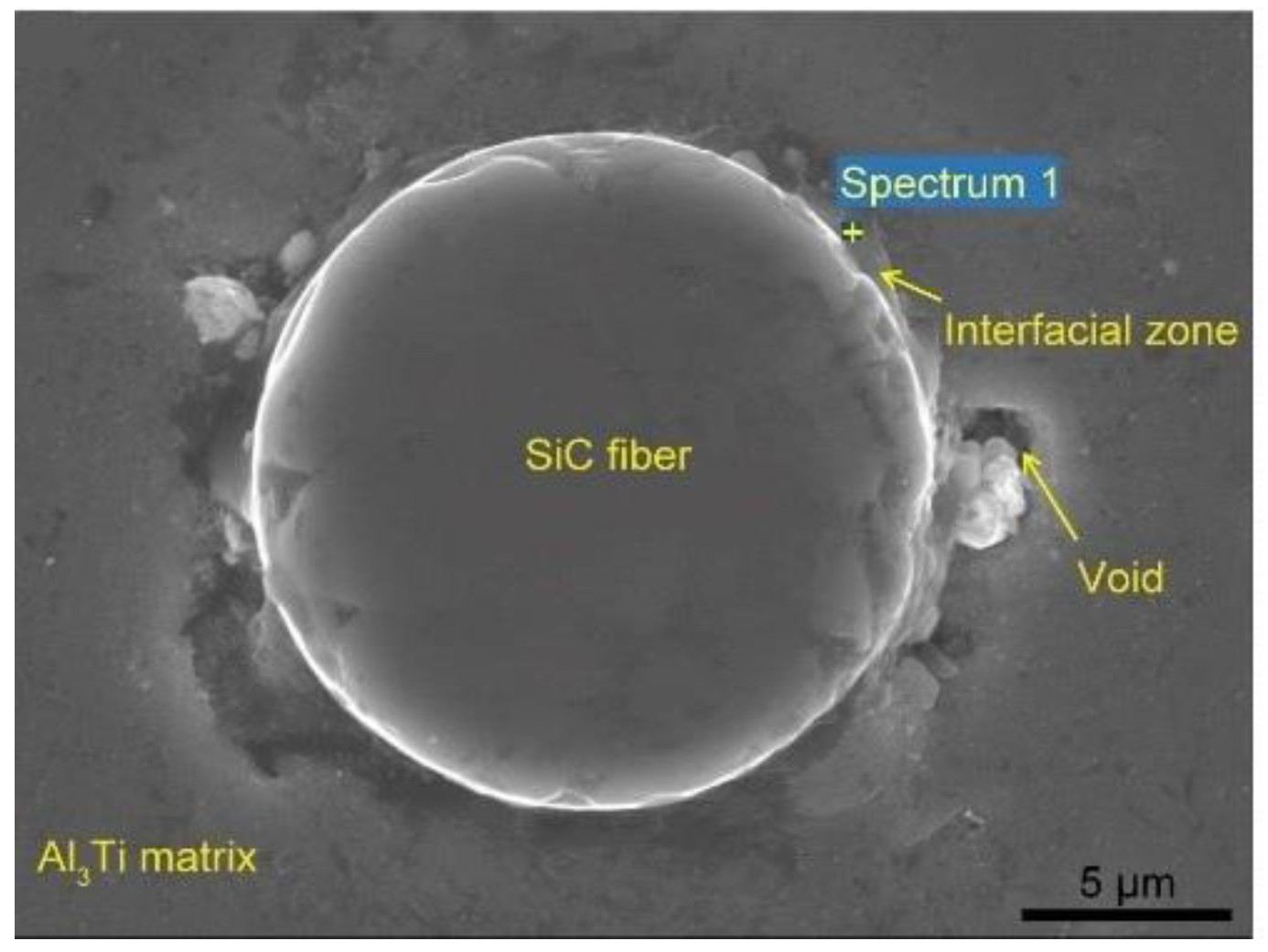
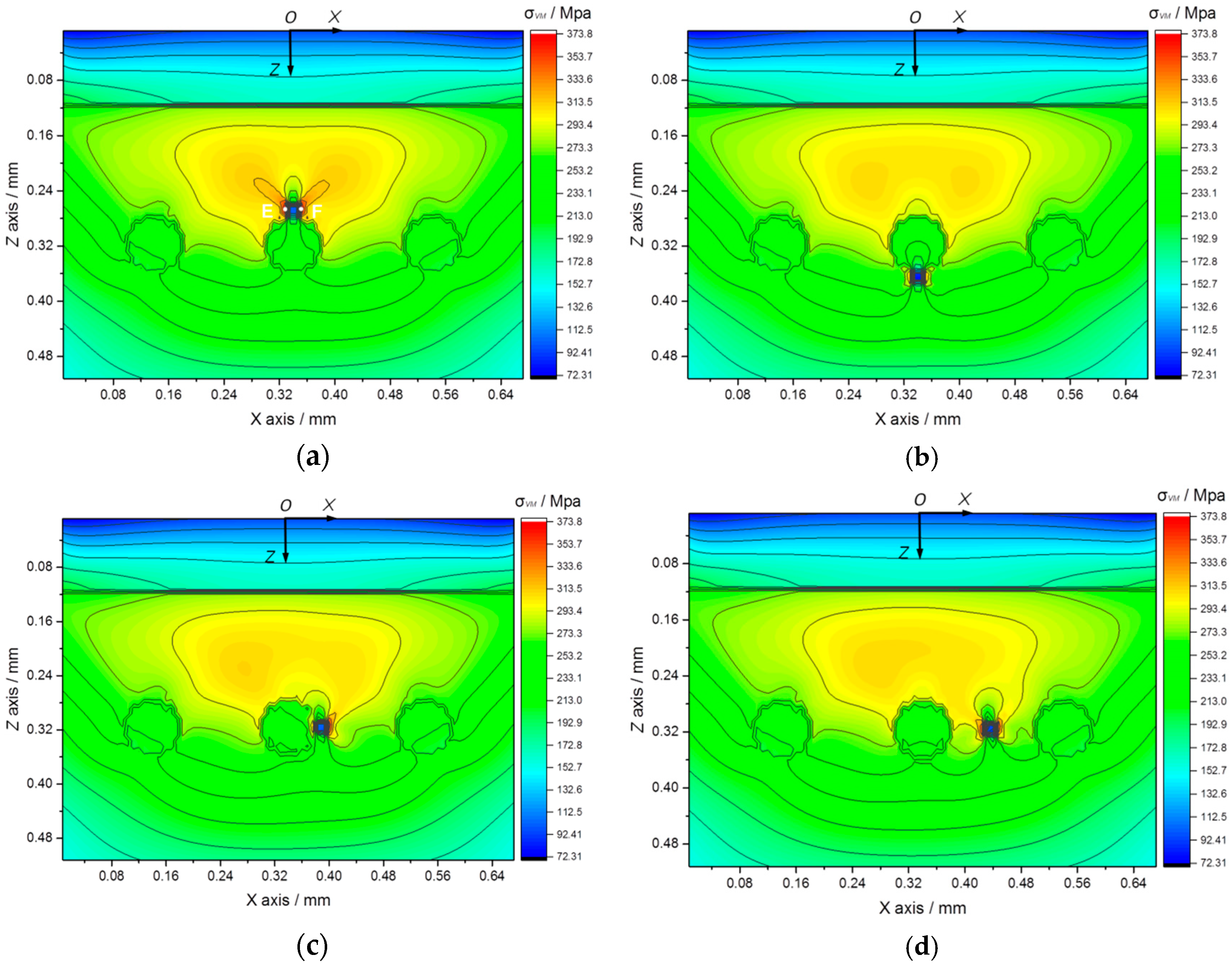

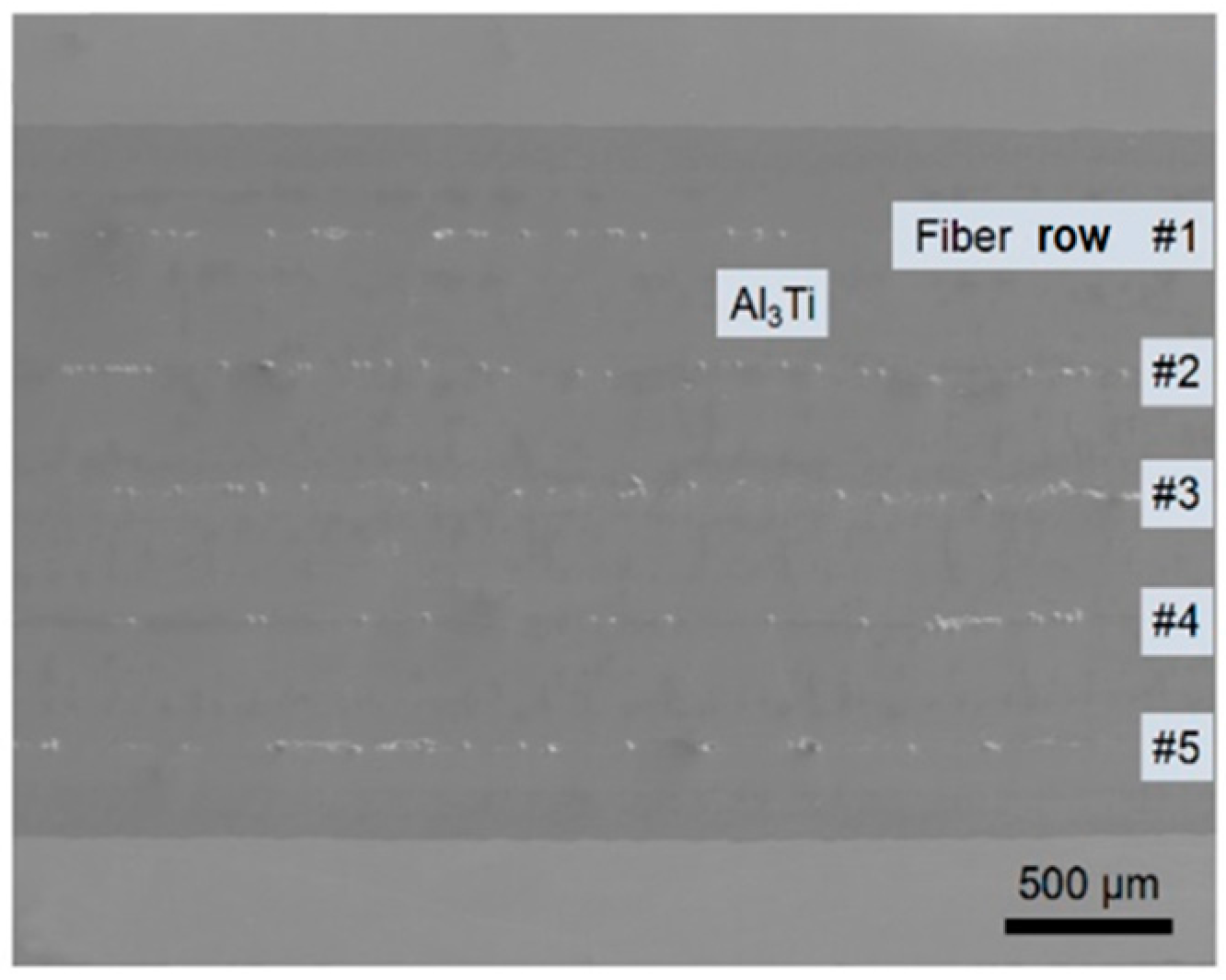
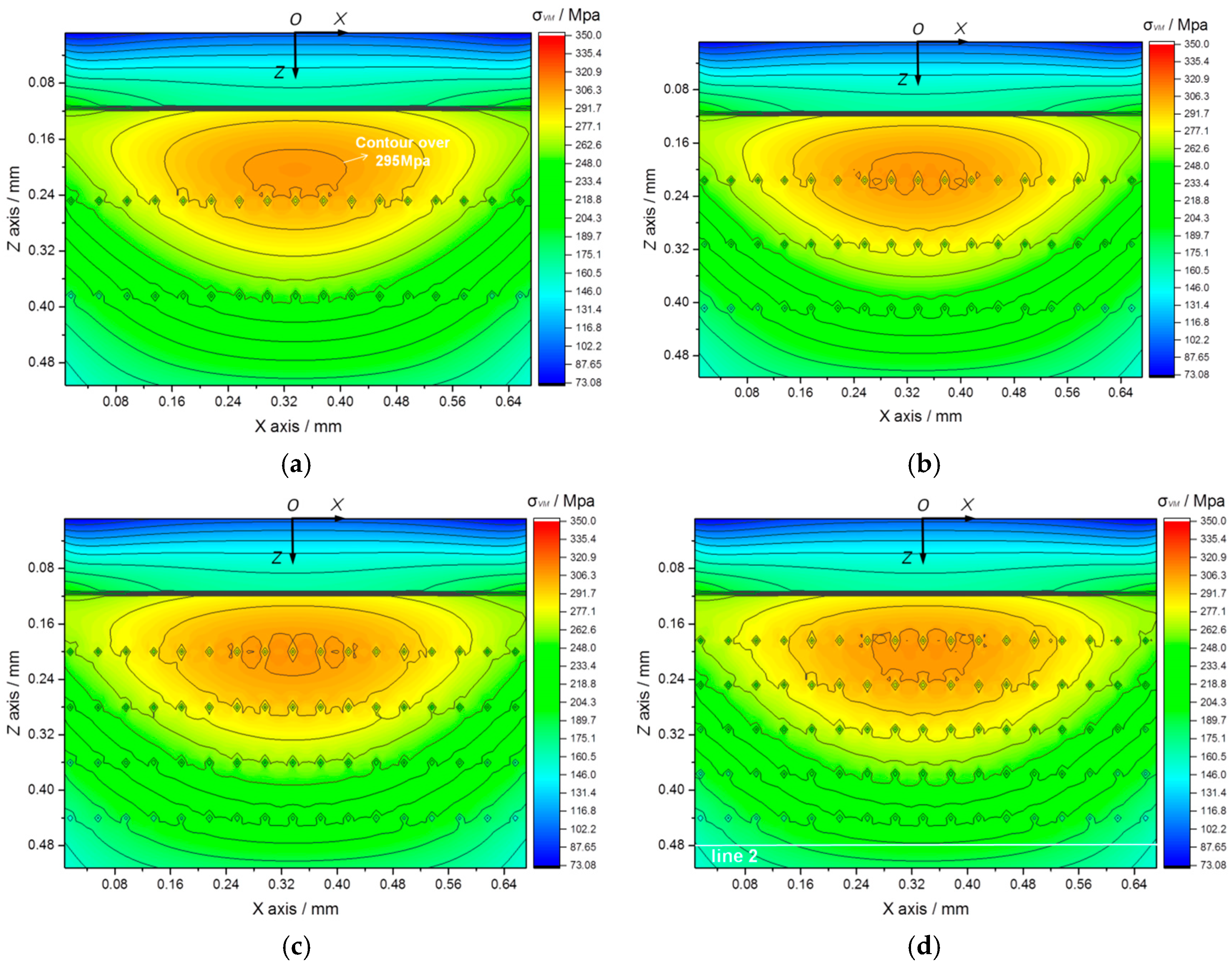
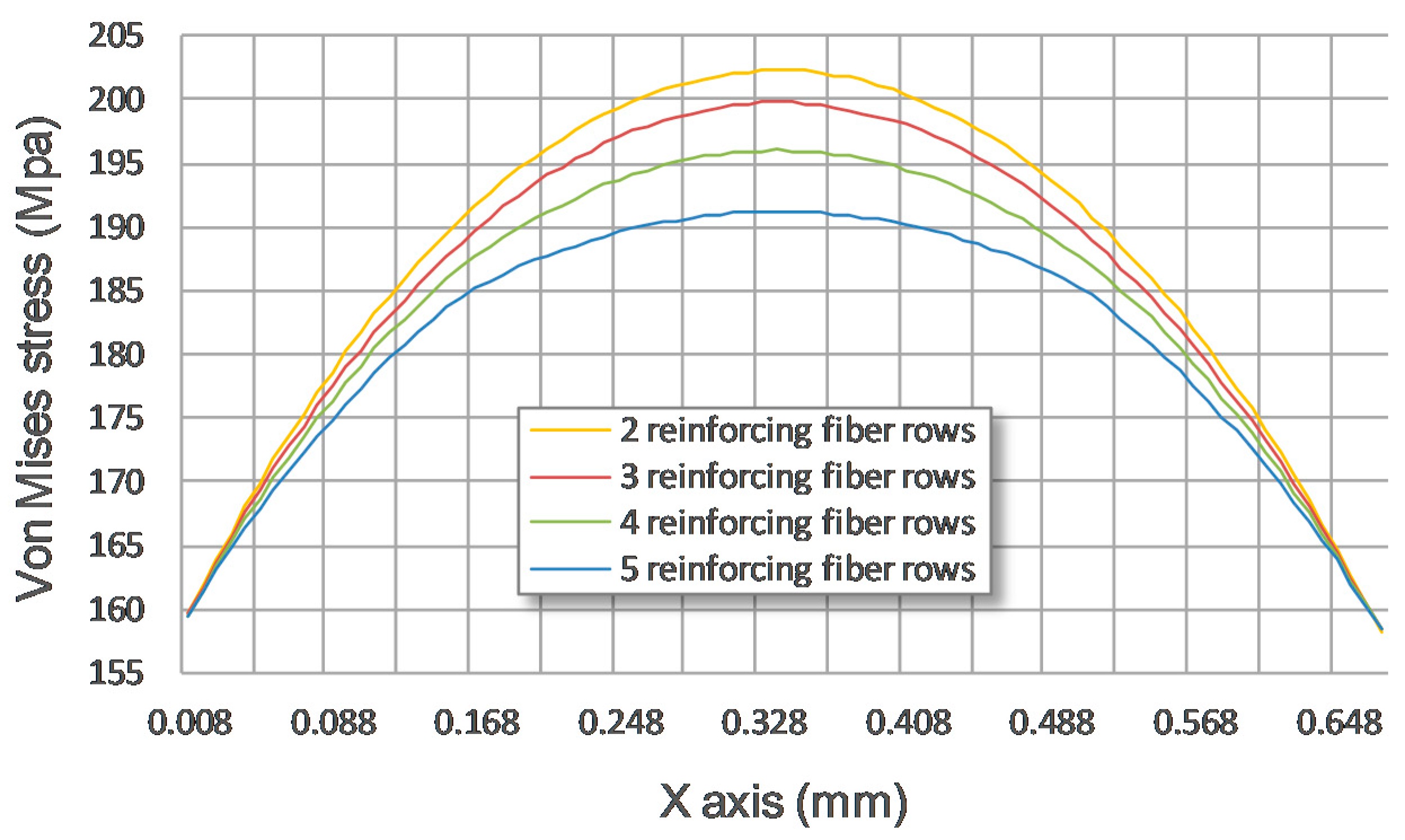
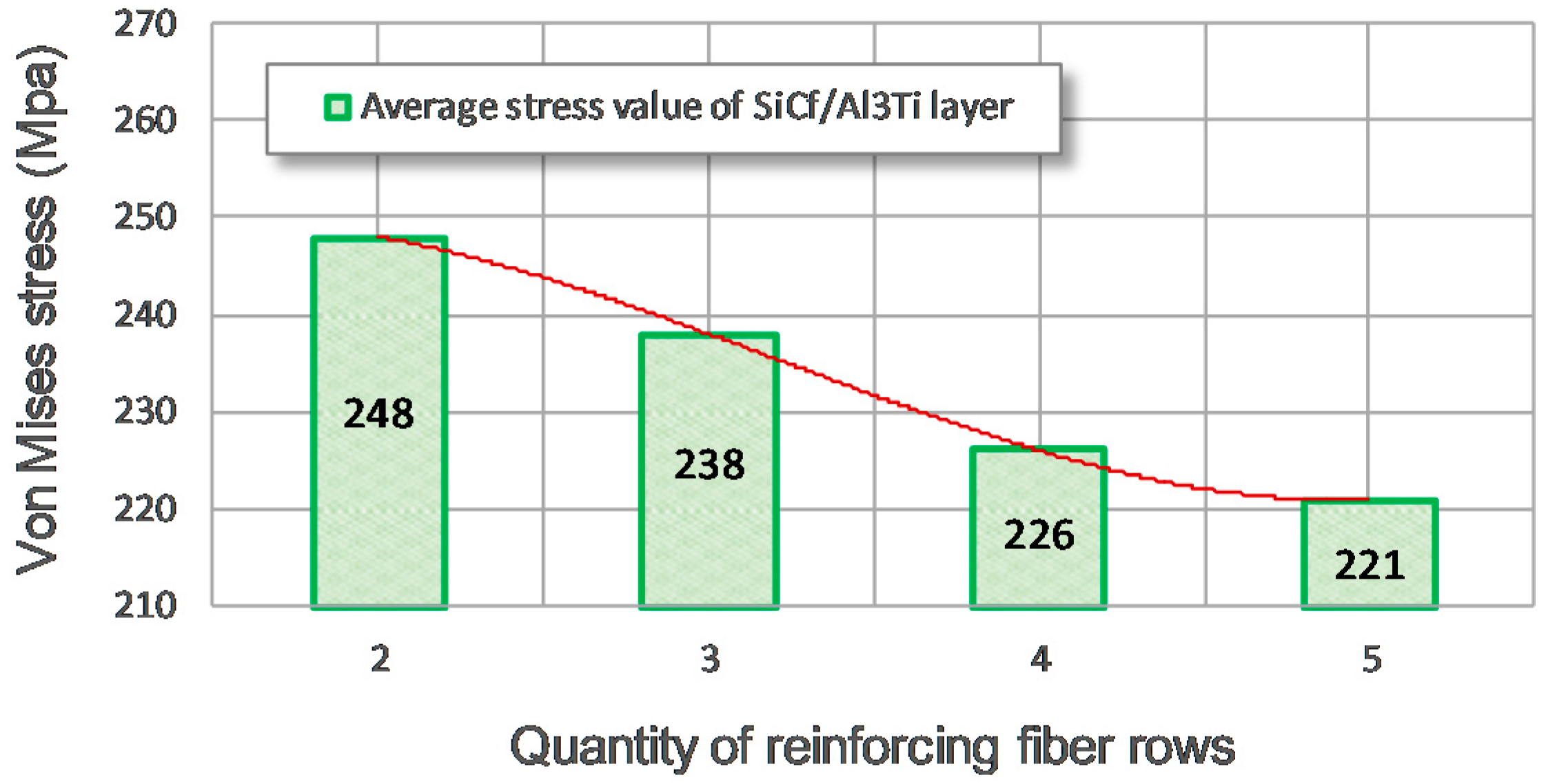
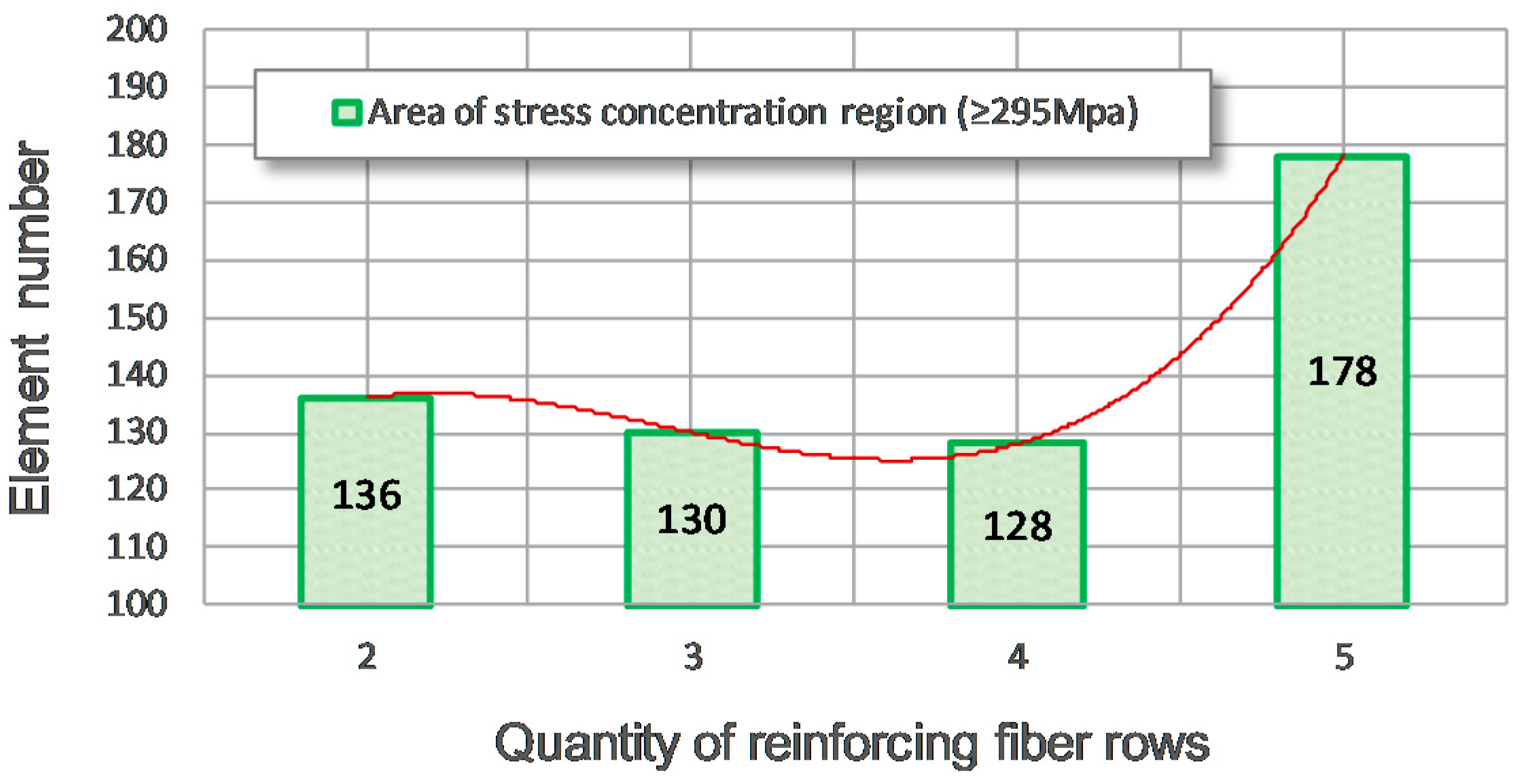
| Items | Al3Ti Layer | SiC Fiber | Ti Layer |
|---|---|---|---|
| Mesh size, SAM, (μm) | 8 | ||
| Element number of calculation zone, SAM (x, y, z) | 84 × 64 × 64 | ||
| Radius of indenter, (mm) | 20 | ||
| Thickness of inhomogeneity Ti layer, (μm) | 112 | ||
| Thickness of Al3Ti matrix layer, (μm) | 400 | ||
| Concentrated load of indenter, (kN) | 16 | ||
| Depth of the first SiC inhomogeneity row, hi (μm) | 244 | ||
| Vertical interval between SiC inhomogeneity rows, hj (μm) | 136 | ||
| Radius of SiC inhomogeneity, r0 (μm) | 4 | ||
| Horizontal distance between adjacent SiC inhomogeneities, d0 (μm) | 8r0 | ||
| Number of SiC inhomogeneities | 34 | ||
| Ratio of Young’s modulus, EInhom/EMatrix [29] | 1 | 1.11 | 0.63 |
| Poisson’s ratio, ν [30] | 0.21 | 0.142 | 0.34 |
| Initial yield strength, (MPa) [30] | 340 | 421 | 230 |
| Isotropic hardening parameter, n [4] | 0.37 | 0.33 | 0.4 |
© 2019 by the authors. Licensee MDPI, Basel, Switzerland. This article is an open access article distributed under the terms and conditions of the Creative Commons Attribution (CC BY) license (http://creativecommons.org/licenses/by/4.0/).
Share and Cite
Liu, J.; Zhang, M.; Jiang, F.; Zhang, L.; Wang, L.; Yun, F. Numerical Simulation for Elasto-Plastic Contact of Novel Ti-(SiCf/Al3Ti)-Laminated Composite with Double-Layered SiC Fiber Reinforcements. Metals 2019, 9, 165. https://doi.org/10.3390/met9020165
Liu J, Zhang M, Jiang F, Zhang L, Wang L, Yun F. Numerical Simulation for Elasto-Plastic Contact of Novel Ti-(SiCf/Al3Ti)-Laminated Composite with Double-Layered SiC Fiber Reinforcements. Metals. 2019; 9(2):165. https://doi.org/10.3390/met9020165
Chicago/Turabian StyleLiu, Jingchuan, Mengqi Zhang, Fengchun Jiang, Lan Zhang, Liquan Wang, and Feihong Yun. 2019. "Numerical Simulation for Elasto-Plastic Contact of Novel Ti-(SiCf/Al3Ti)-Laminated Composite with Double-Layered SiC Fiber Reinforcements" Metals 9, no. 2: 165. https://doi.org/10.3390/met9020165




